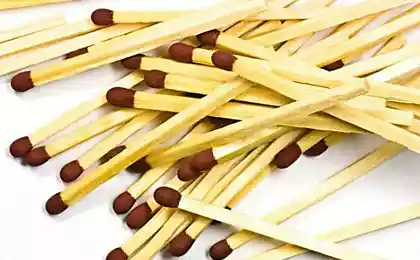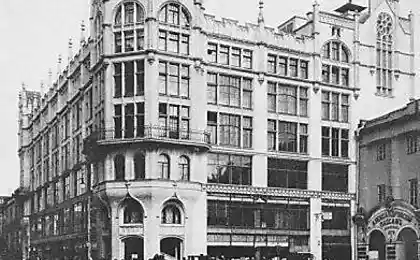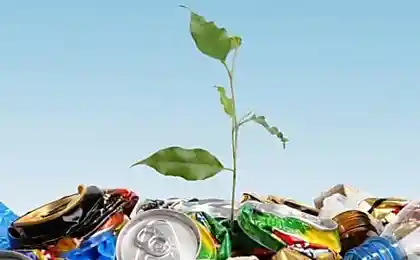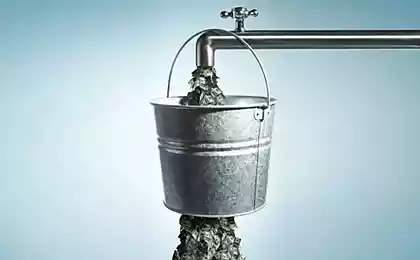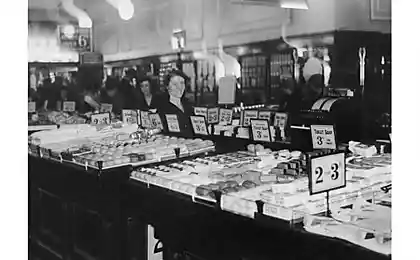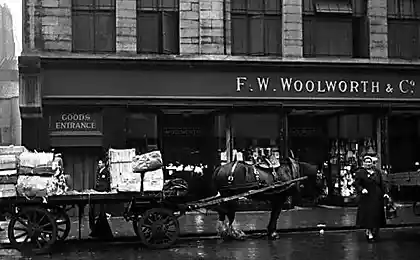879
10 common products that were invented by accident (10 photos)
Sometimes great inventions happen like that at times.
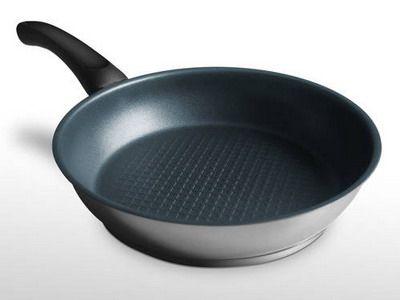
1). Teflon: In the early 20th century, Roy Plunkett, a chemist, worked in DuPont (an American chemical company), stumbled on not chemically react, do not stick chemicals during their experiments with refrigerants in which deliberately tried to find non-toxic chemicals for use as a coolant. After some time he kept tetrafluoroethylene (TFE) in small cylinders in a gas, the frozen state, the gas suddenly turned into a waxy substance. Further experiments showed that the wax had some interesting properties, some of which is well known: it is one of slippery substances known to man. Dupont quickly patented it, and today, this substance is known to us as Teflon.
2). Self-adhesive leaves notes: In 1968, Spencer Silver, a chemist who worked at 3M (US diversified innovation and production company), came across a sticky substance "low tack", at a time when he was trying to make a super strong adhesive for use in aircraft. Silver thought the low tack adhesive which disappeared without a trace, and was to some extent reusable, was helpful, but no one agreed with him. He advocated its use for 5 years before someone in 3M heard it, but even then it took another 7 years of improvements, of which 3 have been there, where they were created, self-adhesive sheets for notes, but they were intended only for internal use as management 3M believe that they have very little commercial value. Finally, they were subjected to the test leaves for notes on a few test markets, but they suffered a setback in four test cities. No one wanted to buy them. Management tried to stop these futile attempts by giving these leaves many companies free of charge. After that, everyone wanted to buy them, and self-adhesive leaves today one of the most purchased goods for the office in the world.

3). Plastic: In the early 1900s, when it came to insulation, shellac was a popular material. But in view of the fact that it was made of beetles in Southeast Asia, the material has been subject to an expensive import. For this reason, the chemist Leo Hendrik Bakeland believed could earn some money by producing an alternative product. What he came up with, however, was formed by a material that could be heated to very high temperatures, without any Amendments - plastic.

4). Microwave: Every bachelor in the world should be grateful to Percy Spencer, a true genius, an orphan, is not over even high school (although at a mature age, he was engaged in self-study and achieved amazing results by studying all possible calculations in the industry, and has become one of the world's leading experts for the manufacture of equipment for radar). At the time when he worked as a specialist in radar, he often was near microwave emitters and stood in front of one of them, when he noticed that the chocolate bar that lay in his pocket melted. Shortly thereafter, he spent a few more experiments, and eggs which have undergone one of them, and did explode, and realize the full potential of the microwave to prepare food. It was 1945, and the world, or, more precisely, the kitchen, was no longer the same.
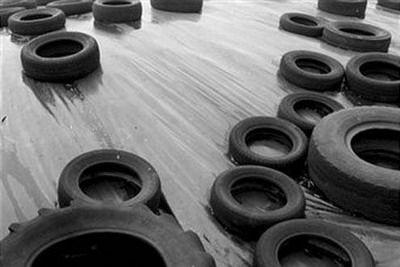
5). The vulcanized rubber: Charles Goodyear spent many years trying to find a way to produce rubber, resistant to heat and cold. After several failed attempts, he finally came across a mix that worked. One evening, before you turn off the light, he accidentally spilled a bit of rubber, sulfur and lead on the stove, resulting in a mixture of charred and hardened, but was still usable.
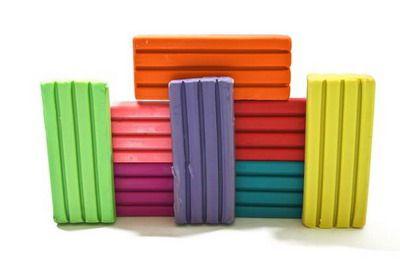
6). Clay: Maybe it's not surprising that smelly, sticky stuff, which for decades children play, was originally used for cleaning wallpaper. However, in the mid-20th century, people refused to use coal to heat their homes, which meant that they were now the wallpaper pretty clean. Fortunately for Cleo Makvikera, owner of the company that produced it cleaner (before they are simply copied a well-known recipe for wallpaper cleaner homemade), his brother's wife, has been teaching, I found another version of its application - clay. In her proposal, they expelled the cleaning ingredient almonds add flavor and a colorant. Thus was born the clay.

7). Superglue: In the development of plastic lenses for small arms, Harry Coover, researcher at the Laboratory Kodak, accidentally received a synthetic glue of cyanoacrylate. However, at the time he gave up his discoveries. However, nine years later, he was "rediscovered", again by chance, but this time, Coover was the head of a project aimed at the development of heat-resistant acrylate polymers. In the course of this project, one of his subordinates, Fred Joyner, superglue rediscovered after it was accidentally glued together two prisms. At this time Coover heard about the "discovery" Joyner, he decided not to abandon him and superglue was released as a commercial product.

8). Slinky spring: During World War II, the engineer of the Navy Richard James, who developed the computational capabilities of the monitor for the battleships, which used special spring keeps the instrument in a stable state at the exit to the ocean, accidentally dropped one of them. To his amazement, the spring "moved" from his desk on a stack of books and landed on the floor. He and his wife immediately saw the potential for a toy. James improved spring tension, resulting in and become Slinky. Although the same as in the case of self-adhesive leaves for notes, people needed a demonstration of what it does, before they would have bought it. Once produced about 400 Slinky springs to the funds received for the loan, and one of the shops persuaded to put them up for sale on the eve of Christmas, a sale never happened. A few days later, James himself came to the store to demonstrate the product. All 400 Slinky were sold within 90 minutes after he did it.

9). Ice cream on a stick: It was 1905, and club soda just become the most popular drink on the market. Eleven Frank Epperson decided he wanted to try to save some money by cooking it at home. Using a combination of soda powder and water, he was something quite similar to the original, but absent-mindedly leave the mixture on the porch all night. The temperature outside reached a fairly low point, and when in the morning he left the house, he found his frozen mixture with a stick for stirring, which he had left there. At first he did not make this discovery is nothing but prepare yourself for delicious treats on a stick over and over again, because he was only eleven. But 17 years later, after the ice cream was served at a ball of fire, and all like, he realized its commercial potential. A year later, he made a business of it, and went down in history.
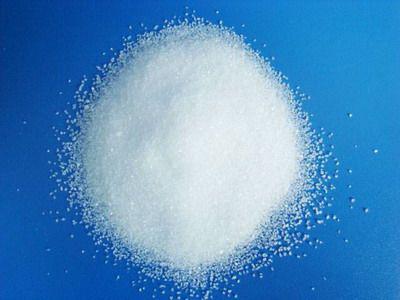
10). Saccharin: You know the pink bag of fake sugar, which is always on the table in a restaurant? The same sweet, like a sugar - you may be surprised to learn how it was invented. In 1879, Konstantin Falberg, a chemist, who tried to find an alternative way of using coal tar, returned home after a long day and the only thing he noticed is the fact that the liver is cooked by his wife, was a much sweeter taste. Asked her about it, he realized that was not washed his hands after work, and voila - an artificial sweetener.

1). Teflon: In the early 20th century, Roy Plunkett, a chemist, worked in DuPont (an American chemical company), stumbled on not chemically react, do not stick chemicals during their experiments with refrigerants in which deliberately tried to find non-toxic chemicals for use as a coolant. After some time he kept tetrafluoroethylene (TFE) in small cylinders in a gas, the frozen state, the gas suddenly turned into a waxy substance. Further experiments showed that the wax had some interesting properties, some of which is well known: it is one of slippery substances known to man. Dupont quickly patented it, and today, this substance is known to us as Teflon.

2). Self-adhesive leaves notes: In 1968, Spencer Silver, a chemist who worked at 3M (US diversified innovation and production company), came across a sticky substance "low tack", at a time when he was trying to make a super strong adhesive for use in aircraft. Silver thought the low tack adhesive which disappeared without a trace, and was to some extent reusable, was helpful, but no one agreed with him. He advocated its use for 5 years before someone in 3M heard it, but even then it took another 7 years of improvements, of which 3 have been there, where they were created, self-adhesive sheets for notes, but they were intended only for internal use as management 3M believe that they have very little commercial value. Finally, they were subjected to the test leaves for notes on a few test markets, but they suffered a setback in four test cities. No one wanted to buy them. Management tried to stop these futile attempts by giving these leaves many companies free of charge. After that, everyone wanted to buy them, and self-adhesive leaves today one of the most purchased goods for the office in the world.

3). Plastic: In the early 1900s, when it came to insulation, shellac was a popular material. But in view of the fact that it was made of beetles in Southeast Asia, the material has been subject to an expensive import. For this reason, the chemist Leo Hendrik Bakeland believed could earn some money by producing an alternative product. What he came up with, however, was formed by a material that could be heated to very high temperatures, without any Amendments - plastic.

4). Microwave: Every bachelor in the world should be grateful to Percy Spencer, a true genius, an orphan, is not over even high school (although at a mature age, he was engaged in self-study and achieved amazing results by studying all possible calculations in the industry, and has become one of the world's leading experts for the manufacture of equipment for radar). At the time when he worked as a specialist in radar, he often was near microwave emitters and stood in front of one of them, when he noticed that the chocolate bar that lay in his pocket melted. Shortly thereafter, he spent a few more experiments, and eggs which have undergone one of them, and did explode, and realize the full potential of the microwave to prepare food. It was 1945, and the world, or, more precisely, the kitchen, was no longer the same.

5). The vulcanized rubber: Charles Goodyear spent many years trying to find a way to produce rubber, resistant to heat and cold. After several failed attempts, he finally came across a mix that worked. One evening, before you turn off the light, he accidentally spilled a bit of rubber, sulfur and lead on the stove, resulting in a mixture of charred and hardened, but was still usable.

6). Clay: Maybe it's not surprising that smelly, sticky stuff, which for decades children play, was originally used for cleaning wallpaper. However, in the mid-20th century, people refused to use coal to heat their homes, which meant that they were now the wallpaper pretty clean. Fortunately for Cleo Makvikera, owner of the company that produced it cleaner (before they are simply copied a well-known recipe for wallpaper cleaner homemade), his brother's wife, has been teaching, I found another version of its application - clay. In her proposal, they expelled the cleaning ingredient almonds add flavor and a colorant. Thus was born the clay.

7). Superglue: In the development of plastic lenses for small arms, Harry Coover, researcher at the Laboratory Kodak, accidentally received a synthetic glue of cyanoacrylate. However, at the time he gave up his discoveries. However, nine years later, he was "rediscovered", again by chance, but this time, Coover was the head of a project aimed at the development of heat-resistant acrylate polymers. In the course of this project, one of his subordinates, Fred Joyner, superglue rediscovered after it was accidentally glued together two prisms. At this time Coover heard about the "discovery" Joyner, he decided not to abandon him and superglue was released as a commercial product.

8). Slinky spring: During World War II, the engineer of the Navy Richard James, who developed the computational capabilities of the monitor for the battleships, which used special spring keeps the instrument in a stable state at the exit to the ocean, accidentally dropped one of them. To his amazement, the spring "moved" from his desk on a stack of books and landed on the floor. He and his wife immediately saw the potential for a toy. James improved spring tension, resulting in and become Slinky. Although the same as in the case of self-adhesive leaves for notes, people needed a demonstration of what it does, before they would have bought it. Once produced about 400 Slinky springs to the funds received for the loan, and one of the shops persuaded to put them up for sale on the eve of Christmas, a sale never happened. A few days later, James himself came to the store to demonstrate the product. All 400 Slinky were sold within 90 minutes after he did it.

9). Ice cream on a stick: It was 1905, and club soda just become the most popular drink on the market. Eleven Frank Epperson decided he wanted to try to save some money by cooking it at home. Using a combination of soda powder and water, he was something quite similar to the original, but absent-mindedly leave the mixture on the porch all night. The temperature outside reached a fairly low point, and when in the morning he left the house, he found his frozen mixture with a stick for stirring, which he had left there. At first he did not make this discovery is nothing but prepare yourself for delicious treats on a stick over and over again, because he was only eleven. But 17 years later, after the ice cream was served at a ball of fire, and all like, he realized its commercial potential. A year later, he made a business of it, and went down in history.

10). Saccharin: You know the pink bag of fake sugar, which is always on the table in a restaurant? The same sweet, like a sugar - you may be surprised to learn how it was invented. In 1879, Konstantin Falberg, a chemist, who tried to find an alternative way of using coal tar, returned home after a long day and the only thing he noticed is the fact that the liver is cooked by his wife, was a much sweeter taste. Asked her about it, he realized that was not washed his hands after work, and voila - an artificial sweetener.



